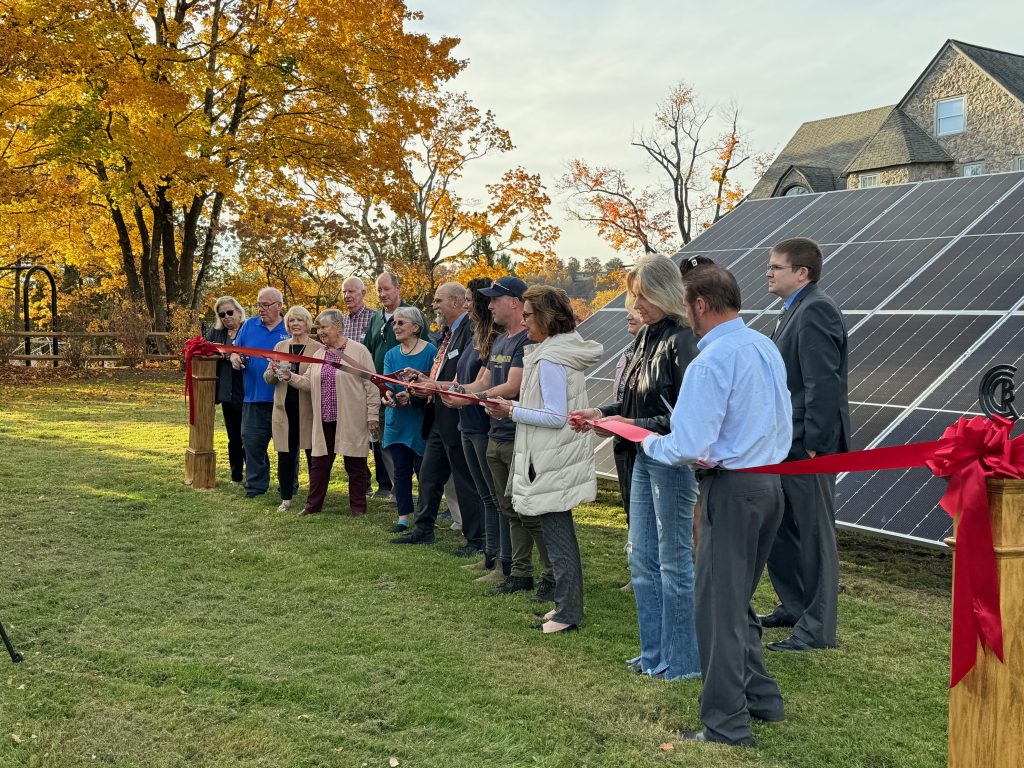Melungeons Celebrate Heritage, Ties to Europe
Although they are a little known Appalachian group, Melungeons have always attracted the interests of people seeking to understand America’s earliest mysteries. Are they remnants of the Lost Colony? Are they descendants of shipwrecked sailors from South Carolina? And how are they linked to Turkey?
Although the questions may not be fully resolved, Turkish-American relations might be improved by exploring the Melungeon mystery, according to speakers at the Kingsport TN Conference Center earlier this summer.
David Arnett , a retired diplomat of Melungeon heritage, addressed the Melungeon Heritage Association’s (MHA) sixth Union and said that there was considerable interest in Melungeons in Turkey. Arnett served in Turkey until his retirement from the State Department last year.
Arnett has also encouraged the efforts of current MHA vice-president Wayne Winkler, who has been working on exchange programs between Wise County, Va., and the resort town of Cesme, Turkey. As a result, one of the main streets in Cesme, which is located 30 miles from the large city of Izmir, is named Wise Cadesi (Wise Avenue), and several Turkish students currently attend the University of Virginia-Wise.
Academic study in Turkey has also focused on Melungeons. A research paper by Mehmet Cakir, written when he was a student at the University of Colorado, explored the linguistic links between Turkish and Melungeon languages. The paper has been cited in many articles about the ancestral links of Melungeons.
Arnett continued his discussion by saying that, while not all Melungeons trace their roots to Turkey, there is a definitive parallel between the Melungeon culture and the Turkish culture, as both groups have a similar respect for family and a sense of accepting strangers into their homes. Arnett said he also attended a lecture about Melungeons in Istanbul.
Arnett said that the Melungeon community could play a vital role in relations between Turkey and the United States which have diminished since the war in Iraq, Turkey’s neighbor, unfolded.
Arnett added that the Turkish people reach out strongly to people with Turkish roots. He cited the Turkish public’s strong support for people in Turkic nations of the former Soviet Union, including Azerbaijan and Uzbekistan.
There was one notable absence at the gathering. Brent Kennedy, one of the leading researchers of Melungeon heritage, is recovering at the Bristol Medical Center from a severe brain hemorrhage that he suffered in December.
The Melungeons, according to a 2000 study by Kennedy and other researchers, were originally thought to be of white European, black African, or Native American descent. But researchers stated that further evidence suggested that there was a mixture of two or more ethnic groups, involving Mediterranean peoples, such as the Spanish, Portuguese, Turks and Sephardic Jews. The study committee said there was additional evidence for a mixture of black African heritage linked to indentured servants and slaves who came to American shores from Angola.
The committee explained that the Melungeons are not a race, but a mixture of various ethnic groups who gathered over time and place in the Appalachian region, including the Virginia counties of Dickenson, Lee and Wise as well as parts of Kentucky and Tennessee.
Kennedy has stated that the Melungeon movement is intent on not defining racial boundaries, but rather blurring them. Modern science has been helpful, but DNA testing has also created additional confusion regarding Melungeon roots.
In 2002, molecular biologist Kevin Jones took DNA samples from 130 people of Melungeon heritage. The scientific researchers verified that there was a complex ancestry that included European, Asian, African, and Native American blood. But Jones said nothing definitive could be concluded about the exact origins of Melungeon heritage.
Another speaker in Kingsport, Tn., was Ted Klein Jr., of Austin, Tx. Klein has researched his Melungeon roots extensively since the mid-1990s following his retirement from the Defense Language Institute English Language Center, where he specialized in teaching English in countries such as Saudi Arabia. Klein traces his Melungeon heritage back to his mother Alma Sioux Scarberry, who was a famed journalist and novelist in the 1930’s.
Klein said that he first thought something was peculiar when he ran into some Bedouins in Saudi Arabia, who asked him if he was Turkish. Klein bears a long moustache that has a resemblance to ones seen in portraits of Ottoman sultans. Klein began his efforts with tracing his family’s roots in 1995. He discovered that his great-grandmother was a Mullins out of Wise County. Klein heard about Kennedy’s books and decided to get more directly involved with the Melungeon movement.
Klein said he extensively researched both sides of his family. In the process, he discovered that his heritage included French Hugenots, and the name Mullins derived from French origins.
“I’m related to about nine Melungeon names. My grandfather believed he was English, but that’s not the case,” Klein said during a phone interview. “For me, it was fun to go the first Melungeon Union and find out that I was related to about one out of five people there.”
Klein also said there are many genetic traits which hint at a possible linkage to Turkey. He added that he became even more aware of these factors when he taught English to college students in the quaint Turkish city of Kutahya, some three hours south of Istanbul, in July of 2001.
Klein explained that one thing he noticed was that he had a knot in the back of his head. He then found that everyone he met with in Kutahya had this knot, which is referred to as the Anatolian Bump. Klein explained that he also thinks there is a Mediterranean link because there were Turkish sailors called “Levends” who traveled on Portuguese and Spanish ships.
Klein’s research was the basis for his article, “An Appalachian Mystery Story” that was first presented to the Austin Genealogical Society in October of 2000. In the article, Klein spoke of how ironic it was that that he did not know what a Melungeon was when he began his quest in 1996, and today he is one.
It is the historical incident involving the landing of some 1,500 Turkish and Mediterranean captives who traveled on the ships of Sir Francis Drake that first made Kennedy interested in researching the ethnic origins of the Melungeons. These men landed on Roanoke Island, NC, where Sir Walter Raleigh was attempting to establish the first American colony around 1585.
In a July 8, 2001 Associated Press article, Chester DePratter, an expert on Spanish colonial archaeology at the University of South Carolina, said there was the potential for the sailors from Roanoke Island to have survived and married into the existing native populations along the North Carolina coast before they gradually moved into Appalachia.
Another forum at the Union was a panel presentation from alumni of the Vardy Community School, a Presbyterian mission school in the Appalachian community of Vardy, Tn. The Vardy area sits on the border between Hancock County, Tn., and Lee County, Va., and it includes several distinctive geographical places, including Blackwater Creek, Newman’s Ridge, and Powell Mountain.
The Vardy Community School was a large three-story structure built in 1929, which was adjacent to Blackwater Creek. The speakers included author DruAnna Williams Overbay. She shared the panel with her fellow classmates Troy Williams, who is retired from the state of Maryland and W.C. “Claude” Collins of Sneedville, Tn.
Collins talked about how he first heard about Melungeons while studying at the University of Tennessee when he was a college student in 1947.
“I saw this article in the ‘Saturday Evening Post’ about Melungeons and there were pictures of my aunts and uncles in it,” Collins said.
Collins smiled when he told his mother about this experience, and she told him that he was to ‘never use that word (Melungeon) again.
During the presentation, Overbay said that some residents of Vardy, such as herself, considered themselves to be of Melungeon heritage while others do not.
“For us, being a Melungeon is part of our ancestry,” Overbay said.
Williams said that there was definitely a sense of discrimination in nearby communities towards those who were of Melungeon heritage.
“We were different by the way we were treated, even in high school,” Williams said. “I got the cold shoulder because I was from Vardy.”
Overbay said that the school experience in Vardy helped her tremendously.
“I thought that we were just as good as anybody else,” Overbay said. “I felt like we got a wonderful education there.”
The author is a Turkish-American from Salem, Va. He is a recent graduate of the film studies program Hollins University in Roanoke, Va. He resides in Reidsville, NC.
Who Are the Melungeons?
As the region prepares for the 400th anniversary of the Jamestown setttlement, we are coming to appreciate that the English were actually not the first Europeans to settle in the region. Along with the Vikings in the far north and the Spanish along the Florida coast, a group of Europeans worked their way the coast up into the Appalachian mountains sometime in the late 16th century.
According to a 2000 statement by the Melungeon Heritage Association (MHA) the Melungeons are a people traditionally thought to be of European, African or Native American descent. However, emerging evidence indicates that Melungeons are also in some part Spanish, Portuguese, Turks, Berbers, Moors and Sephardic Jews among other groups and races.
The statement adds that Melungeons are not a “race” but a mixture of various ethnic groups who gathered over time and place. The MHA also pointed out that common threads of economic status and social experiences also tie Melungeons together.
Although they settled and intermarried with Native Americans and African Americans over the centuries, they also retained portions of a unique culture.
For more information about the Melungeons, see:
Melungeon Heritage
Melungeon Health
http://www.melungeonhealth.org
Related Articles
Latest News
More Stories

Leave a comment
Your email address will not be published. Required fields are marked *




